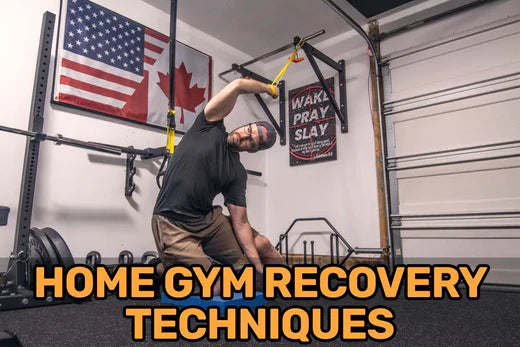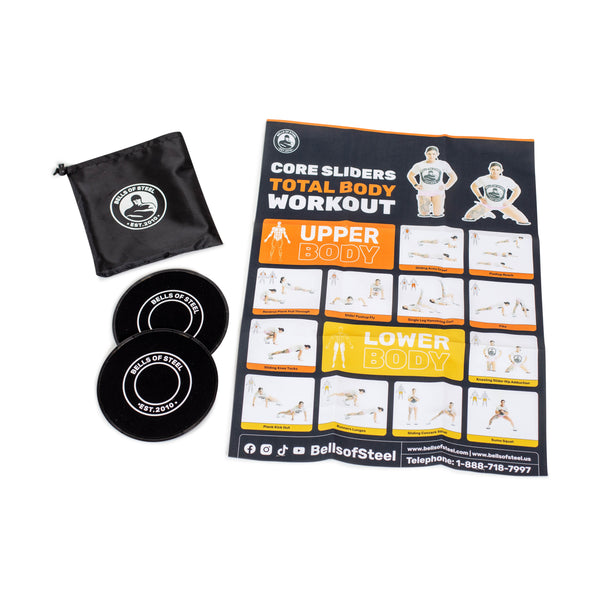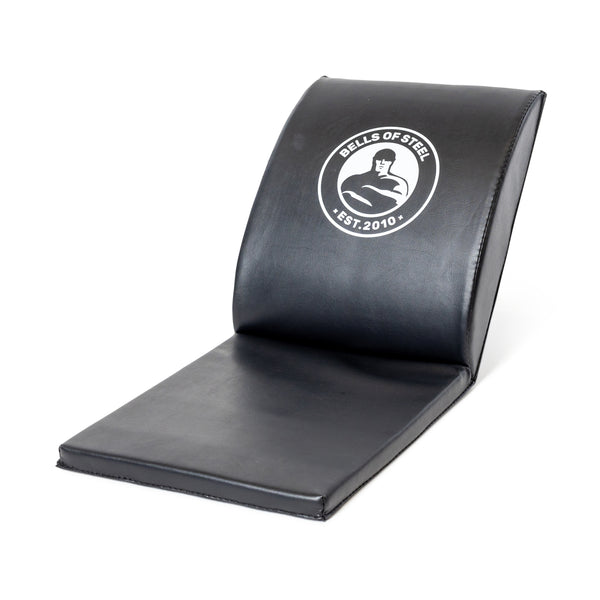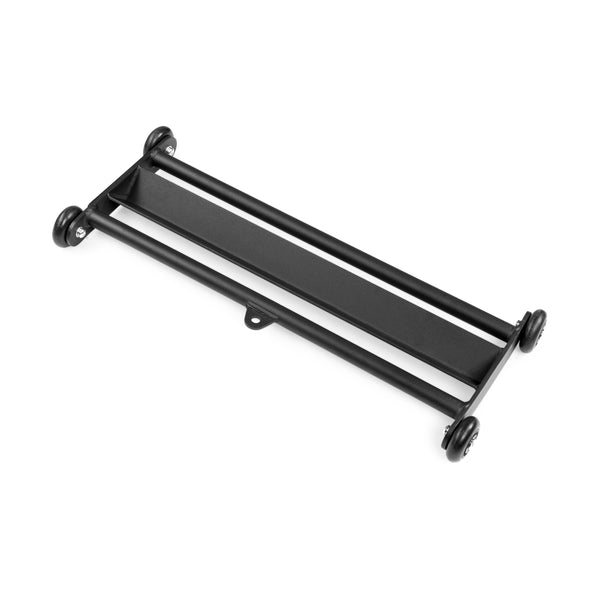Strength training and fitness are lifelong pursuits. They promote longevity, improve quality of life, and allow you to keep doing what you love. Whether you train for the sake of training or performance-based competitions and goals, life isn't nearly as enjoyable when you can't do what you love.
So, if you want to be lifting weights for all your days and experience the best results possible, you’ll need to do more than merely lift; you'll also need to recover from the stress and strain you're routinely putting on that chassis of yours. It's worth it, trust me. And while the thought of performing recovery-based training can be dreary for plenty of lifters, it doesn't have to be.
If you have a home gym, you have a serious advantage when incorporating recovery techniques into your training. And the best part is, it doesn't take much to capitalize on this advantage. Capitalizing on this unique advantage is critical since recovery-based training will allow you to:
- Train more frequently
- Train more effectively
- Train more intensely
The only downside is that as a home gym owner, you have no excuse to forego the recovery techniques described in this article. But you're not going to forego them since you're interested in powerful and practical strategies that will enhance your performance and prolong your lifting career, right? As the adage goes: train hard, recover harder.
The term "recovery" is a broad brush to paint with when referencing physical activity, so we must ensure we're all on the same page here. There are numerous facets to recovery, and it feels like an infinite rabbit hole one could go down when talking about what exercise recovery consists of, how it is performed, and the physiologic effects it creates. There's no need to overcomplicate things here. For the sake of this article:
- Recovery consists of any movement or intervention that positively affects physiologic recovery within the body.
- Recovery is performed through a deliberate act involving the attempt to improve the current function or status of one or more aspects of the body.
- Recovery elicits increased functional ability to a heightened extent and hastened pace than would otherwise occur without the intervention.
To get the most out of this article, we’ll provide concepts and general techniques that lifters and active individuals can use in ways that best suit their needs. Rather than discussing specific protocols or exercises (which might not work or be appropriate for everyone), you're getting conceptual techniques. How you incorporate them is up to you.
With all the time you save by training at home, there’s no excuse for not devoting a few extra minutes to recovery-based training. Here, I’m using a Glute Ham Slider in an arching motion to perform some soft tissue mobilization for my lats.
Home gyms allow you to be much more time-efficient throughout your day. You save a lot of time by not needing to drive to the gym, waiting for equipment to become available, getting distracted by others, driving home, etc. It probably takes you ten seconds to walk from your living room to your basement or garage, where your weightlifting kingdom awaits. Whether training at home adds up to saving twenty minutes or over an hour of your precious time, you've absolutely gained back enough time to put towards designated recovery interventions — don't deny this; you can find a way to do some recovery work, be it for five minutes or fifty.
Whether it's mobility exercises, deep breathing techniques, meditation, self-soft-tissue treatment, or any other activity that promotes bodily recovery, take the time you've gained by being able to train at home and put it to good use. There are numerous ways to do this, so check out the following techniques to make it happen.
Break up your recovery sessions into smaller, daily segments or dedicate a workout per week to recovery.
If you're still working toward a home gym, it can be tough to regularly give your best efforts towards certain recovery interventions; many lifters are confined to performing much of their recovery work when they're at the gym and have access to the space or equipment available within the facility. For many of those individuals, there may only be a few spare minutes following their workout to fixate on recovery interventions before needing to leave the facility, and coming back later in the day to do recovery work is out of the question. This can lead to performing negligible recovery work or skipping it altogether.
As a home gym owner, your recovery sessions or interventions don't have to be right after your workout — you can easily walk back to your basement or garage and perform some recovery goodness after you've taken care of that task for your wife or tucked your kiddo into bed. Making recovery work convenient is the cornerstone of being compliant with recovery-based training. Whether you enjoy breaking up your recovery work into multiple short segments throughout the day, performing recovery techniques immediately after your workout, or at a distinctly different time from your resistance training, a home gym allows for highly convenient sessions, so make the most of this.
It’s perfectly fine to work with what you’ve got. Here, I’m using a kettlebell to perform the classic “tissue smash” for a couple of trigger points in my quad muscles.
You don't need an entire gym to perform effective recovery training. Equipment can help, but it's not the be-all-end-all. After all, recovery consists of more than just equipment-based intervention. Suppose you've only got a yoga mat. In that case, you've got enough to lay down in a quiet space and perform some deep breathing techniques (which can help down-regulate your sympathetic nervous system after an intense training session or several sessions). If you've only got a pull-up bar, you've got enough to perform some shoulder mobilization and spinal decompression by performing a few rounds of dead hangs. A barbell sleeve from an Olympic bar is a phenomenal tool for rolling your quadriceps, IT band, adductors, and even your calves for some IASTM (Instrument-Assisted Soft Tissue Mobilization). Kettlebells can work great for performing the classic "tissue smash" to take care of trigger points within tight, stiff, or sore muscles. Your workout bench can be used to assist with various stretches. A glute ham slider can be an outstanding way to stretch your lats or mobilize your hamstrings. The list goes on and on; a good carpenter can do more with a few basic tools at their disposal than an inexperienced carpenter with every tool at their disposal. Recovery work with strength equipment is no different.
If you have a barbell, you’ve got the perfect instrument to roll out your quadriceps, IT band (shown here,) and adductor muscles on the inside of your thigh. Be warned though, this amazing technique feels as awful as it is helpful!
As lifters, we often become meticulous with tracking every set, repetition, exercise tempo, and other acute training variable within our strength training pursuits. However, we find it burdensome to do the same with recovery-based work. If this sounds like you, start thinking about recovery ratios. A recovery ratio is exactly what it sounds like; it's a ratio of how much recovery work you perform for a given amount of strength training you grind through. Using a ratio can help keep you on track to ensure you're looking after your body as you progress through your training programs. While there's no universal ratio (since every individual's training and recovery needs are different), you may want to start somewhere around a 4:1 ratio—for every four minutes you spend training, you spend one minute performing dedicated recovery work. This would equate to performing 15 minutes of deliberate recovery intervention for every 60 minutes of training. Using ratios can help you better plan your sessions, provide a bit more structure to your recovery (rather than just "winging it"), and help keep you accountable for getting your recovery work done, but without being burdensome. As long as you hit your targeted time participating in recovery work, you don't have to worry about tracking the details of each particular intervention. It's up to you whether you adhere to your recovery ratio within each training session or perform more of a block-style recovery session (see next section). The most important thing to do is to find a system that works for you so that you'll consistently rack up your mandatory minutes of recovery work.
Workout benches provide extensive versatility for recovery-based exercises and movements. Here, I’m performing a simple thoracic spine extension pattern for my mid-upper back.
For plenty of lifters, the fact that we can make time to train is a miracle in itself. Life can keep us incredibly busy, and our few free minutes are used up entirely for our lifting. If you struggle to find available time for getting in your recovery work throughout the week, it may be in your best interests to perform a dedicated recovery session — one that consists entirely of recovery interventions — either on a non-training day or by replacing one of your training sessions altogether. You can think of your recovery minutes as a quota to meet each week. A daily quota isn't realistic for many of us, and recovery doesn't need to be performed every single day, so aiming for a weekly target is perfectly acceptable. Sometimes, it's nice not to mentally "switch gears" within a single training session (i.e., go from a stimulated or intense mentality to an unwinding mentality). I've often found my recovery work much more enjoyable and effective when I can go through an entire session with a calm or relaxed mindset. A dedicated recovery session can take place in your home gym, or you can mix it up (go for a walk around the block, etc.) As strength-focused individuals, we often take our strength training seriously while needing to be more mindful of our recovery-based training. If you're serious about optimizing your physicality and are keen to spend your remaining days lifting as much as possible while feeling good, you must find ways to incorporate recovery-based interventions into your strength training pursuits. Take the concepts within this article and implement them in ways that allow you to perform convenient and consistent recovery work within your home gym. At the end of the day, if you have a home gym, you can incorporate these recovery techniques into your strength training. Disclaimer: None of this is medical advice and is for informational purposes only; please seek an assessment from a qualified healthcare professional.
This is a guest post by Jim Wittstrom. Jim is a physiotherapist and strength & conditioning specialist currently practicing in Calgary, Alberta, Canada. His passion is to help others overcome their physical pain and come back stronger than before. For more great info, you can find him on Strength Resurgence.



